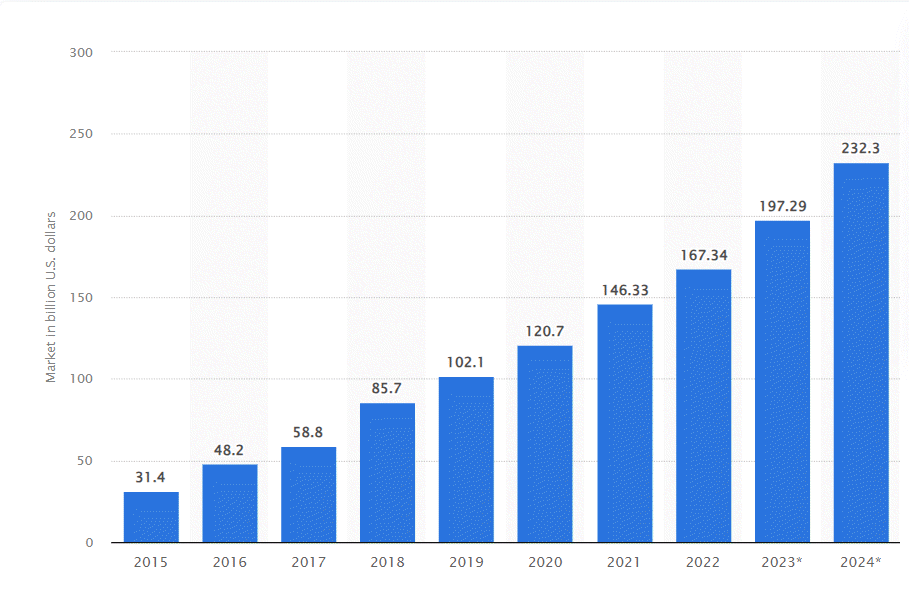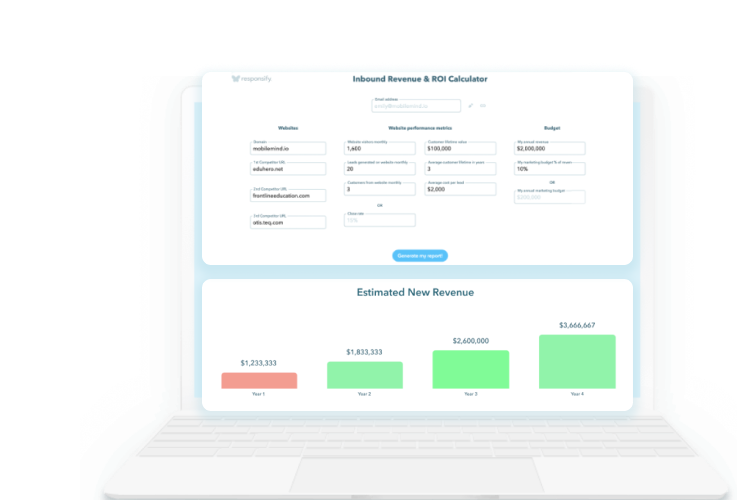 1,767 views
1,767 views 4205 Views
4205 Views  7 min read
7 min readYou know you must have an effective B2B SaaS content strategy, but you’re not quite sure what’s needed to move the needle for your business effectively. If you’re here, you fall into one of two compromising situations.
1.) You’re a start-up, not necessarily in an established category, and need demand generation to make the market aware of a problem that exists, and you have the solution. Or
2.) You’re in an established market and need to position yourself differently because sales have gone south.
Today, the key to a successful B2B SaaS content strategy is to prioritize personalization, provide valuable insights, and engage your target audience through a variety of formats and channels. But what formats and channels work best for B2B SaaS? Before you tackle the plethora of marketing strategies you hear daily—and we’re going to go over our top ones that are working for SaaS companies—you need to define your Ideal Customer Profile (ICP) and realize the core funnel is still alive. We’ll dig into key marketing strategies you need to drive for maximum impact on your pipeline and revenue growth. If you start implementing them now, you’ll accelerate your path to the next growth stage for your business.
Everything. Your ICP is crucial for your sales and marketing success. So when you sell a B2B SaaS product, your ICP is the company, where a specific buyer persona (e.g., Head of HR) is in charge of the buying process. A clear ICP:
Ideal customer profiles (ICPs) are used in B2B marketing to understand the needs of your target market at the account level. ICPs define who to target, while buyer personas determine how to best communicate with the individual. Businesses that fit your ICP are most likely to buy and continue to use your product, making them extremely important for business growth. An ideal customer profile will tell you the type of company you need to target and why by helping you identify characteristics such as industry, employee size, valuation, investors, IPO status, and more. You will find commonalities that will give you insights for better messaging to improve overall lead quality. With your ideal customer profile defined, you’ll get their attention so they become a lead that turns into an opportunity that generates revenue.
SaaS content marketing is competitive. Developing a solid positioning and strong message will identify you as a leader in your SaaS product and help create content aligned with your company and potential customers’ buying journey. With many SaaS brands competing for the same customers, you need an edge over your competition. Understanding the types of content strategies and their differences will help grow your sales funnel.
Demand generation entails making the market aware of a problem that exists, and that your business has the solution. You can see it as demand creation and demand capture with sales converting demand to closed won revenue. Chris Walker gives the low down on creating and capturing demand. Capturing demand is when a B2B buyer has the intent to buy something and is converted into a pipeline (free trial or meeting with your sales team.) Warning: Chris doesn’t hold back, and his passion for where you should send a potential customer is explicit. However, he drives the point to realize if a user’s intent is to purchase —help them take action and buy, send them to a pricing page, a demo, etc. There is a time and place for different content assets.
Chris Walker, Back to Basics: Creating Demand vs. Capturing Demand, via YouTube.
Demand generation typically includes a combination of Outbound marketing—paid social, PPC, or Ad retargeting and Inbound Marketing—SEO, organic social, and more.
Inbound Marketing is a form of marketing focused on converting prospects through regularly published high-quality content. The content is distributed through organic channels such as SEO or social media. Inbound focuses heavily on providing value with relevant, educational content that nurtures your buyers through the stages of their buyer’s journey: awareness, consideration, and decision. Like demand generation, you need to understand your target audience and create content that meets their needs and challenges. Unlike demand gen, inbound marketing does not rely on advertising-driven traffic. Both demand gen and inbound marketing focus on bringing new leads and prospects to your brand. The main differences are that demand gen increases brand awareness, educates your target audience, builds trust, and sparks interest. Inbound does much of the same, captures audience contact information, directly nurtures qualified leads, demonstrates brand value and differentiation, and converts leads to customers. Inbound marketing is all about nurturing leads into sales opportunities through content.

Another method B2B SaaS companies use is ABM. With account-based marketing, the initiative is to identify target companies instead of individual people (buyer personas). The ABM method targets leads that are a high fit but may have yet to raise their hand and express interest. It concentrates resources on a set of target accounts within a market. To implement account-based marketing, companies need to:
With all three strategies, the common theme is identifying customer pain points and mapping the pain points to your product features and benefits. We create strategic campaigns and editorial calendars by mapping out those pain points your product solves and matching a topic with organic search intent to that pain point.
Referral marketing is any B2B SaaS company’s secret weapon. When you can harness the power of word of mouth, it will speed up your sales cycle and generate the best-qualified leads. Your ideal customers know more about your future customers. Ask them if they know others in their role who would benefit from your product. Create retention and upsell content:
This approach can increase customer satisfaction, drive renewals, and lead to upselling opportunities.
Building a B2B SaaS content strategy involves creating and distributing relevant and consistent content to attract and engage your target audience. But it is one of the fastest-growing industries and competition can become fierce.
 Image source: Statista
Image source: Statista
As organizations adopt SaaS solutions for business functions, they need to adopt content marketing strategies to outwit their competitors. You can begin by creating content for the different stages of the funnel.
A top-of-funnel content strategy focuses on attracting and engaging an audience of potential customers in the early stages of their buyer’s journey.
The middle of the funnel, or the consideration stage, effectively moves leads toward conversions.
Bottom of the funnel: As prospects near the end of the buyer’s journey, they evaluate providers for specific or specialized offerings. When you start with the end in mind (bottom of the funnel) you’ll find prospects directly searching for a solution to the problem your SaaS product solves. In this stage, the keyword you go after has high buying intent and low search volume. It’s important to have content and keywords at each stage and to recognize and set performance expectations. And if you’re wondering if content marketing for SaaS still works . . .
Content distribution is the process of publishing and promoting your content through different channels. This can include your website and blog, social media channels, email, videos—through YouTube and TikTok, podcasts, and the list goes on. There are owned channels, such as blogs, gated content, and landing pages. Earned belongs to external third parties where you can post your content (guest posts), and paid, where you pay-to-play (sponsored content, social media ads). Your website and blog can be filled with content to increase brand awareness, lead generation, and conversions. Emails and newsletters can fulfill lead nurturing, user engagement, and conversions. Social media profiles, YouTube, and podcasts build brand awareness, user engagement, and lead generation.
There are no one-size-fits-all techniques. You must find what works for your business and target audience. If you are after ICPs, Linked In may be a good choice. Your ICP business buyers are on LI, and it has organic reach. In order to build trust, you have to commit to posting every week (bare minimum). If YouTube is your thing, you can run webinars and events. The key takeaway is no matter the channel, you must consistently provide value to get more leads, generate a pipeline, and close more deals.
Also Read – SaaS Content Marketing Agency: Everything You Need to Know
B2B SaaS content strategies are limitless. When done right, you’ll see the results you want. Embrace a content strategy that fits your company’s needs. We help B2B SaaS companies find the right content strategy to engage and educate their audiences to accelerate their growth effectively.
Feel free to book a 1-on-1 Content Strategy Session with our lead strategist today!
